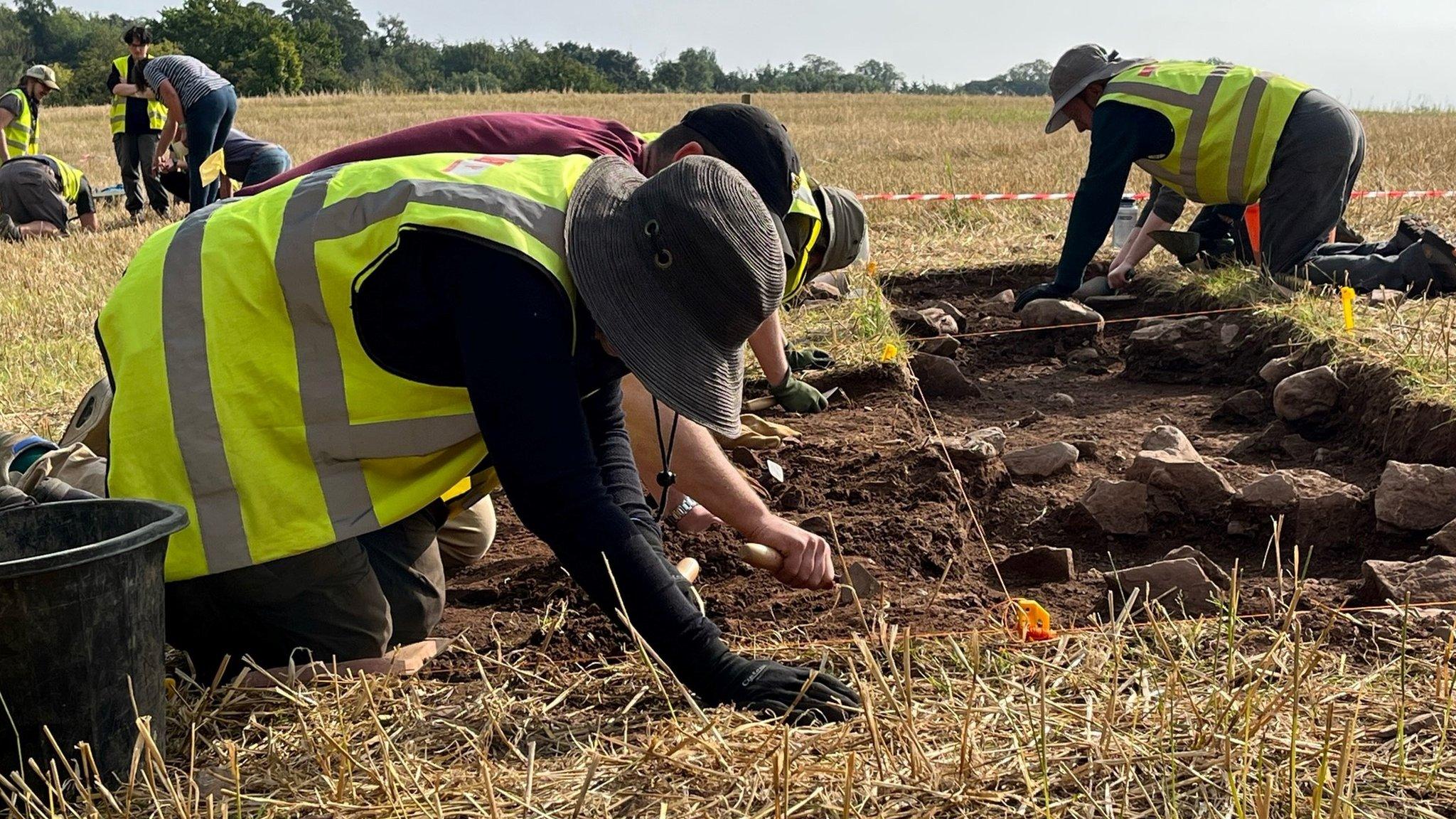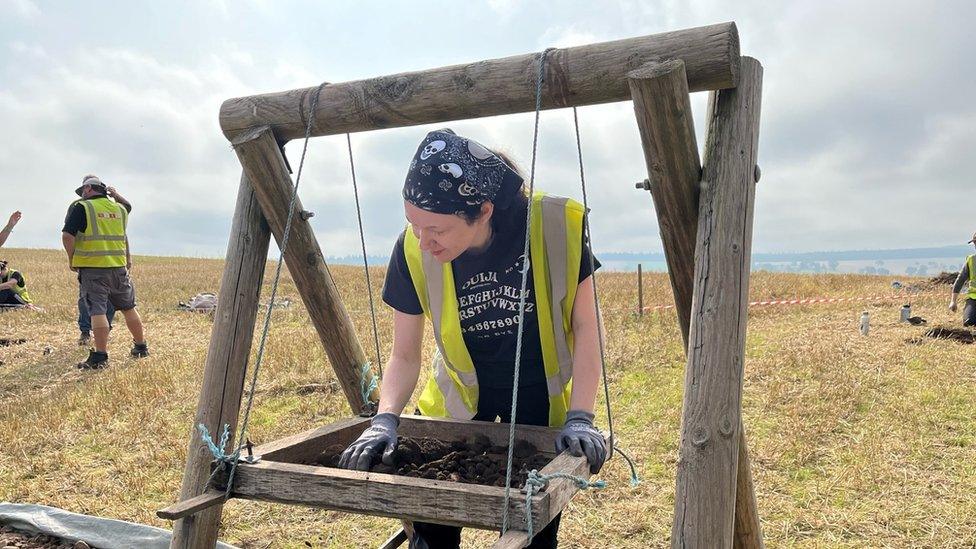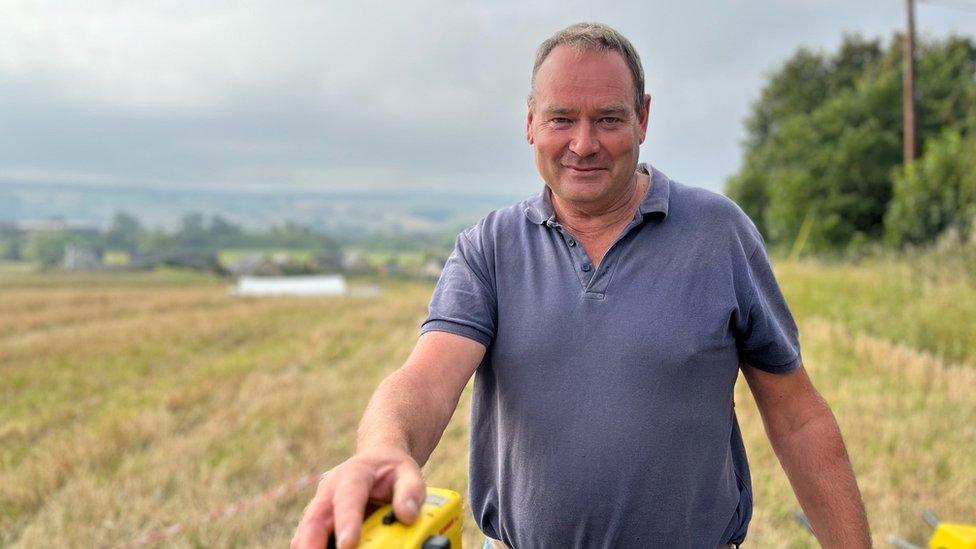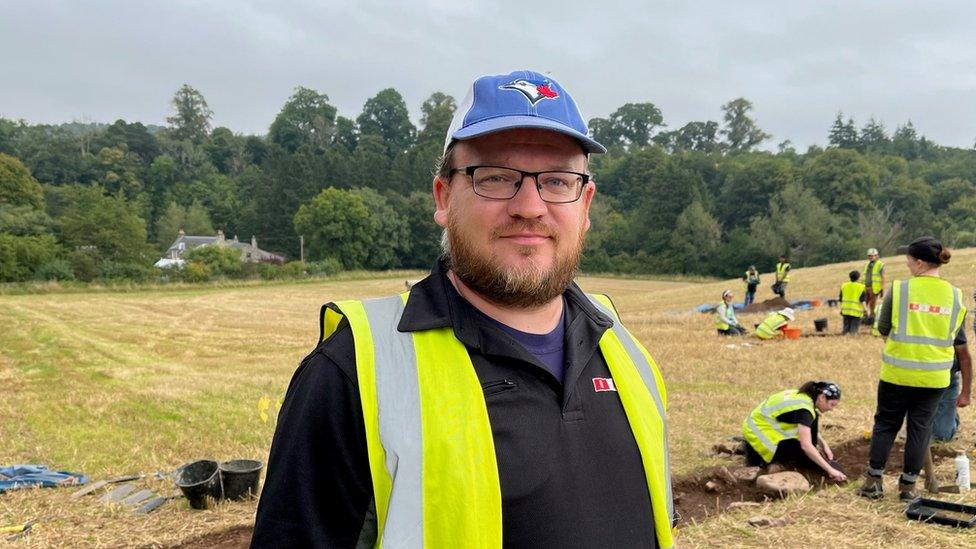World archaeologists hunt for lost palace in Scottish Borders
- Published

Archaeologists from around the world are taking part in a dig to identify a medieval palace in the Borders
An international effort is being made to identify a medieval palace in the Scottish Borders.
Archaeologists and students from Australia, the USA, Canada and the Netherlands have descended on a field outside the village of Ancrum.
Earlier digs have identified a "substantial" medieval building, without establishing its purpose.
Archaeologist Ian Hill said: "We are now trying to determine exactly what the building was."
Documents show that the Bishop of Glasgow, William de Bondington, had a summer residence at Ancrum, near Jedburgh, from the 1230s until his death in 1258.
The palace entertained Scots royalty with at least three charters being signed there by Alexander II in 1236.

Work will continue on the Mantle Walls site for two weeks
Through the centuries, a substantial building on the Mantle Walls hillside was gradually lost, with stone being taken to build parts of the neighbouring village.
Local folklore continued to locate the bishop's palace at the site, and ploughing of the land regularly threw up pieces of medieval and post-medieval pottery, as well as human bones.
In the 1990s Alistair Munro, who lives nearby, walked Mantle Walls several times with the dowsing rods he used for locating underground water sources.
His initial discovery of substantial areas of stonework beneath the harvested field led to historians and archaeologists taking interest.

Alistair Munro has spent more than 30 years searching for answers
Following a geophysical survey in 2011 - which corroborated much of Alistair's mapping - excavations were carried out the following year and again in 2019.
Through finds, including medieval ironwork and substantial stone walls, archaeologists are confident that Mantle Walls was the residence of the Bishop of Glasgow.
But defining proof has yet to be found as much of the collapsed walls had been taken by builders in the 17th and 18th centuries, and metal-detectorists are known to have targeted the fields for many decades.
Mr Munro said: "Ever since I came here to try out my dowsing rods and found some structure, getting to the truth about this site has been a passion of mine.
"With each survey and dig we get more information, and hopefully over the coming weeks we'll be able to get closer to being able to say for definite what was here.
"We have archaeologists and students from all over the world helping us, which shows how much interest there is in getting the answers we're looking for."
The previous archaeological surveys and digs have provided enough evidence for Mantle Walls to become a scheduled monument of national importance.
This latest dig, which will last until 16 September, will concentrate on three or four pits surrounding the main protected area.

Ian Hill from HARP Archaeology is leading the excavations
Ian Hill from HARP Archaeology is leading the excavation.
He said: "While a substantial medieval building has already been identified we don't know the extent of the site or if there were more buildings.
"We would love to be able to say for sure what the site was, and hopefully boundary walls and other outlying structures will enable us to do that."
Fourteen archaeology masters students from across the world signed up to take part in the two-week project.
Cambridge University student Sully Newman travelled from London with his trowel.
He said: "It is great to be here with students and archaeologists from all over the world to gain experience of working on such an important dig.
"We are learning about medieval history in this part of the world and how this building would have fitted in to the landscape of that time."